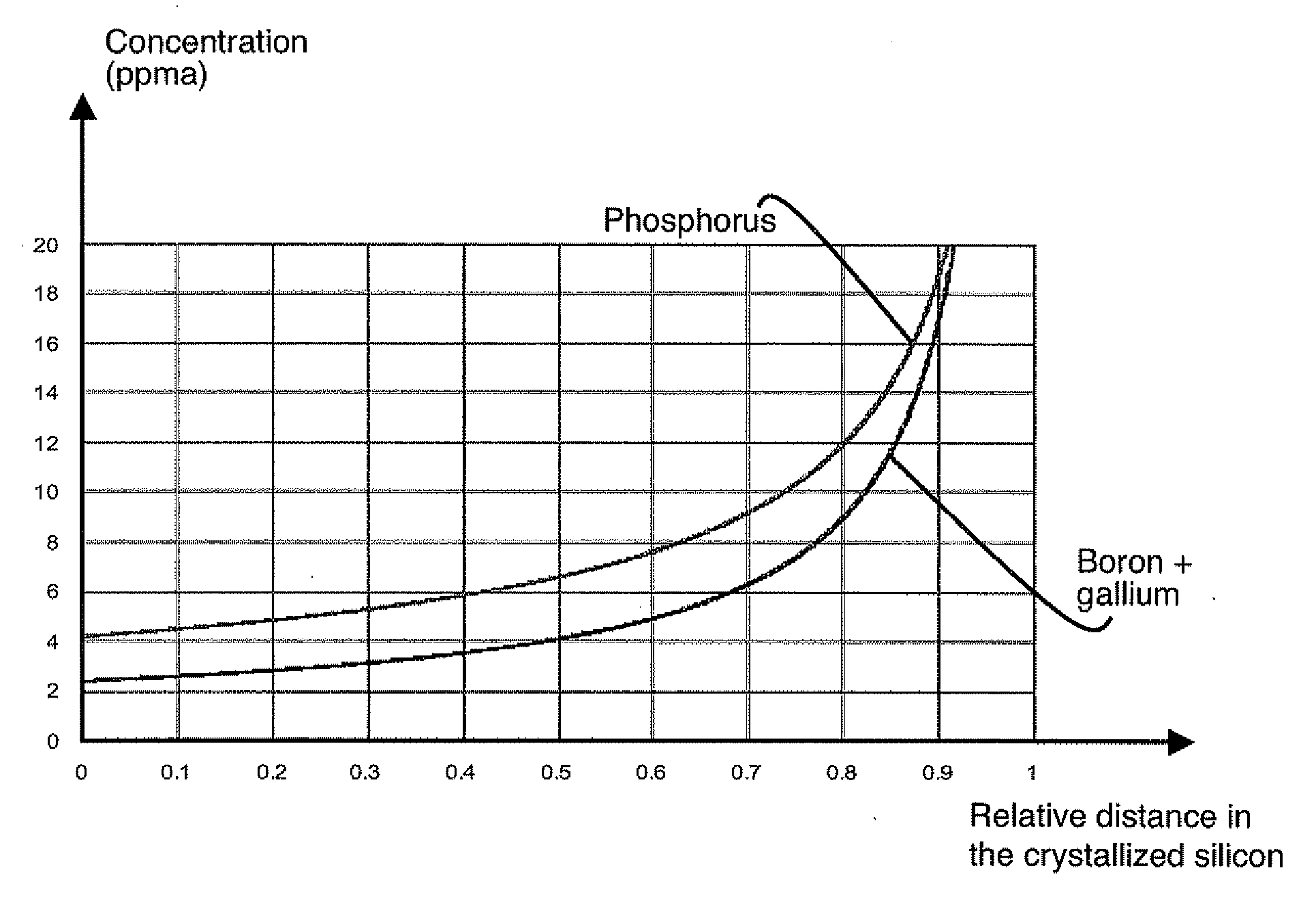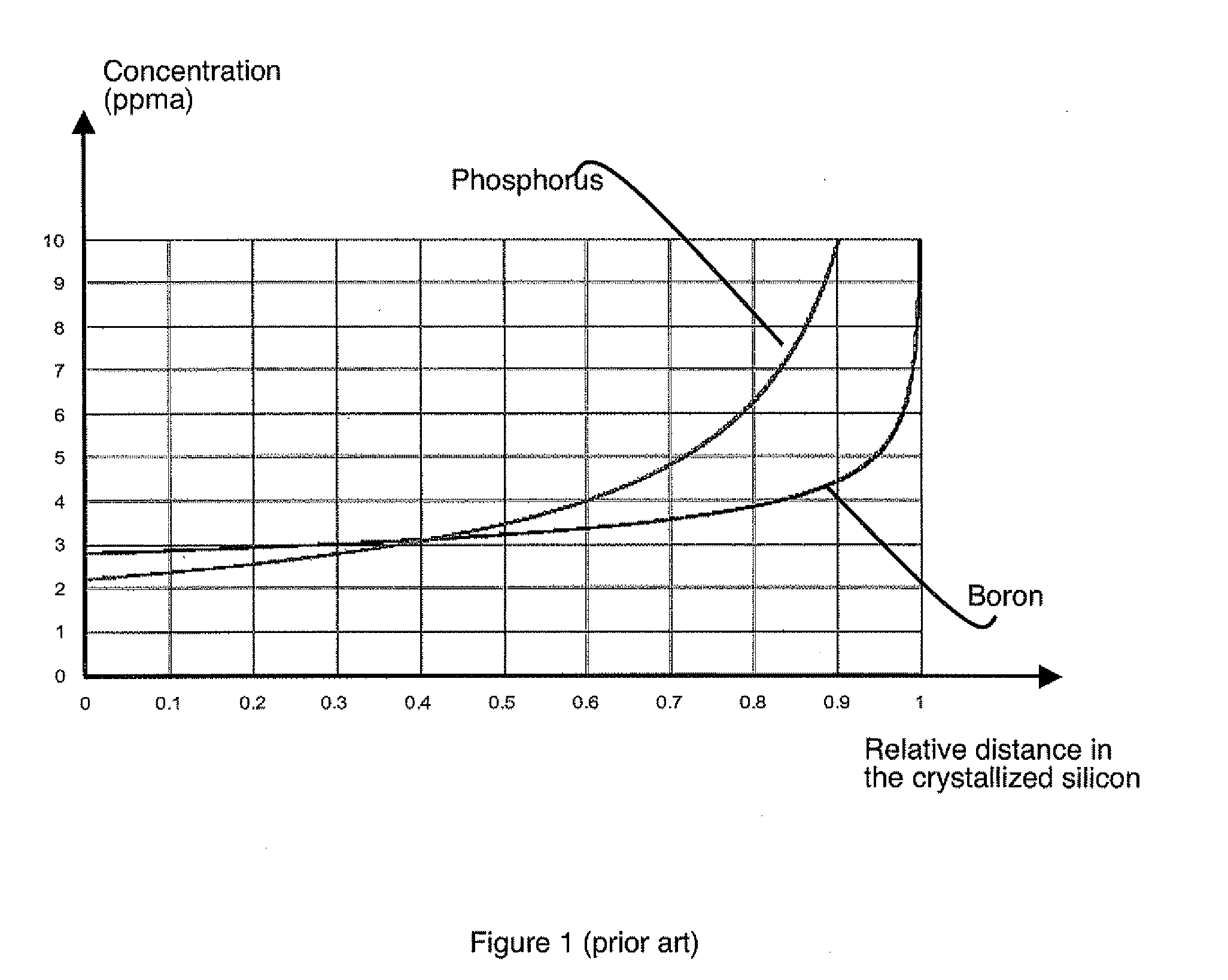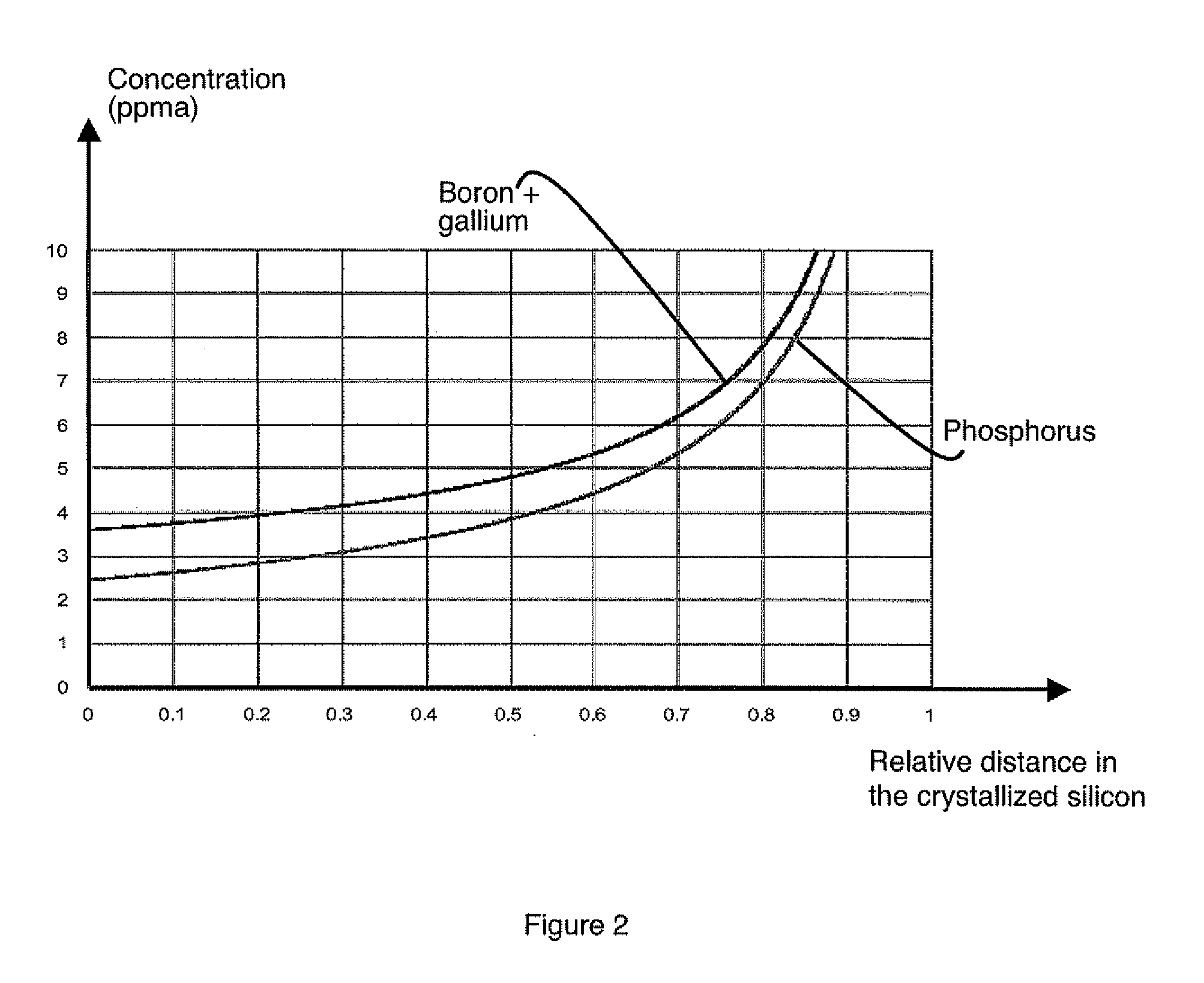Method for producing photovoltaic-grade crystalline silicon by addition of doping impurities and photovoltaic cell
a technology of crystalline silicon and impurities, applied in the field of silicon base photovoltaic cells, can solve the problems of high cost, inability to use efficient elimination techniques, and high impact of purification on the total cost of silicon and on its availability on the market, and achieves the effect of convenient implementation
- Summary
- Abstract
- Description
- Claims
- Application Information
AI Technical Summary
Benefits of technology
Problems solved by technology
Method used
Image
Examples
Embodiment Construction
[0029]A silicon feedstock is placed in a crucible. The feedstock can be constituted solely of metallurgical grade silicon, of purified metallurgical grade silicon, of photovoltaic grade silicon or of microelectronic grade silicon or of silicon rejects of the latter two lines, for example solar grade or highly-doped electronic grade silicon. The feedstock can also be comprised of a mixture of two or more of these types of silicon.
[0030]The sum of the initial concentrations of donor and acceptor type dopant materials present in the raw feedstock is larger than or equal to 0.1 atomic ppm (ppma). Each type of dopant, donor and acceptor, further has a maximum concentration of less than 25 ppma. For example, if the feedstock is essentially constituted by metallurgical grade silicon, the donor and acceptor doping atom concentrations are both comprised between 0.1 and 25 ppma. On the contrary, in another example, if the feedstock is essentially constituted by electronic grade silicon but th...
PUM
| Property | Measurement | Unit |
|---|---|---|
| concentration | aaaaa | aaaaa |
| concentrations | aaaaa | aaaaa |
| phosphorus concentration | aaaaa | aaaaa |
Abstract
Description
Claims
Application Information
 Login to View More
Login to View More - R&D
- Intellectual Property
- Life Sciences
- Materials
- Tech Scout
- Unparalleled Data Quality
- Higher Quality Content
- 60% Fewer Hallucinations
Browse by: Latest US Patents, China's latest patents, Technical Efficacy Thesaurus, Application Domain, Technology Topic, Popular Technical Reports.
© 2025 PatSnap. All rights reserved.Legal|Privacy policy|Modern Slavery Act Transparency Statement|Sitemap|About US| Contact US: help@patsnap.com



